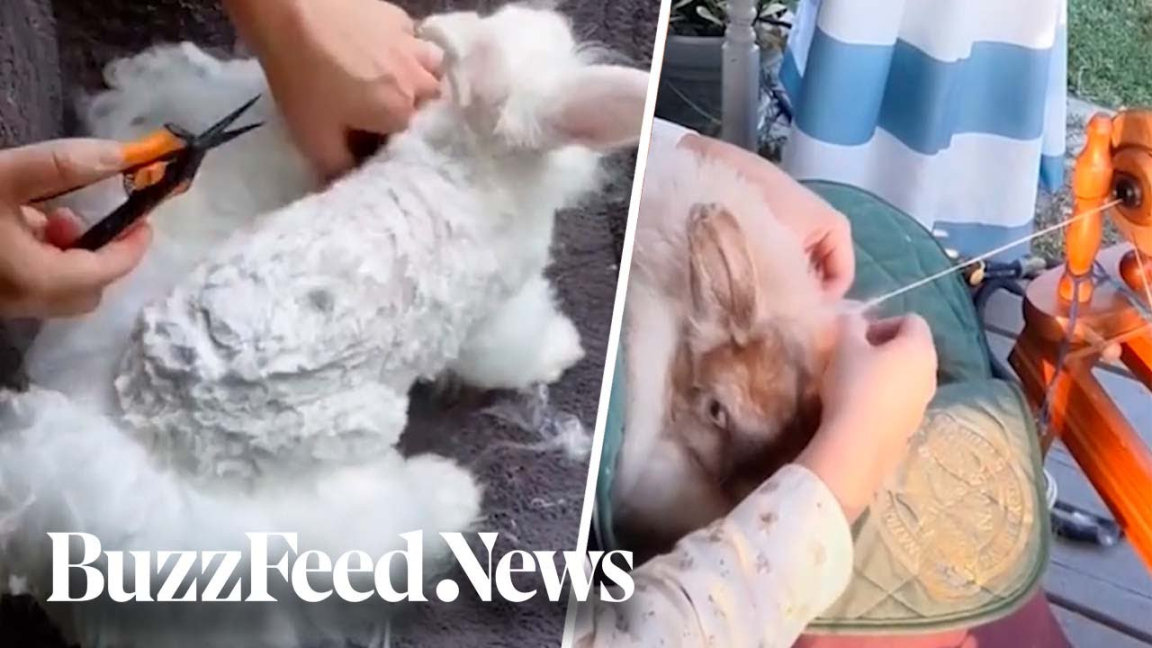How to Spin Angora Rabbit Wool
Angora rabbit wool is highly prized for its softness and warmth. If you own an Angora rabbit or have access to its wool, spinning it into yarn can be a rewarding and enjoyable process. In this article, we will guide you through the steps of spinning Angora rabbit wool.

Step 1: Harvesting the Wool
The first step in spinning Angora rabbit wool is harvesting the wool from your rabbit. Gently pluck or shear the wool from the rabbit’s body, making sure not to cause any harm or discomfort. Collect the harvested wool in a clean container, taking care to remove any dirt or debris.
Step 2: Cleaning the Wool
Before you can start spinning the Angora rabbit wool, it is essential to clean it thoroughly. Fill a sink or basin with lukewarm water and add a mild wool detergent. Gently agitate the wool in soapy water, making sure not to stretch or distort the fibers. Rinse the wool thoroughly with clean water until no suds remain.
Step 3: Drying the Wool
After cleaning, carefully remove excess water from the wool by gently squeezing it. Avoid wringing or twisting the fibers, as this can cause felting. Lay the wool flat on a clean towel and roll it up to absorb more moisture. Finally, lay the wool on a drying rack or another clean towel in a well-ventilated area to air dry completely.
Step 4: Carding the Wool
Carding is the process of aligning and blending the fibers of the Angora rabbit wool. Use a pair of hand carders or a drum carder to card the wool. Take a small amount of clean, dry wool and place it on the carder. Gently brush the wool with the carder in a controlled motion, ensuring the fibers are aligned. Repeat this process until all the wool is carded.
Step 5: Spinning the Wool
Now that the wool is carded, you can begin spinning it into yarn. There are various spinning techniques, but the most common method for spinning Angora rabbit wool is using a spinning wheel. Attach a leader yarn to the bobbin of the spinning wheel and treadle gently to start spinning. Carefully draft a small amount of the carded wool and attach it to the leader yarn. Continue spinning and drafting, allowing the twist to enter the fiber, thus forming yarn.
Step 6: Playing the Yarn (Optional)
If you prefer a thicker or more robust yarn, you can ply the singles together. Plying involves twisting two or more strands of spun yarn together to create a stronger, more balanced yarn. Attach the ends of the singles to the bobbin of the spinning wheel and treadle in the opposite direction to ply the yarn. Once plied, the yarn is ready for use.
FAQs about Spinning Angora Rabbit Wool
1. How often should I harvest wool from my Angora rabbit?
It is recommended to harvest the wool from your Angora rabbit every three to four months. This allows the rabbit’s coat to regrow sufficiently without causing any discomfort or stress to the animal.
2. Can I spin Angora rabbit wool without a spinning wheel?
Yes, you can spin Angora rabbit wool without a spinning wheel using a drop spindle. A drop spindle is a portable and hand-powered spinning tool that allows you to spin yarn. However, learning to spin on a drop spindle may require some practice and patience.
3. How should I store my spun Angora rabbit wool?
It is best to store your spun Angora rabbit wool in a cool, dry, and well-ventilated area. Avoid exposure to direct sunlight or excessive humidity, as it can cause the fiber to degrade or lose its softness over time. Placing the yarn in a sealed container or bag can help protect it from dust and pests.
4. Can I dye Angora rabbit wool after spinning?
Yes, you can dye Angora rabbit wool after spinning. Natural dyes or commercial dyes specifically formulated for wool can be used. Follow the dye manufacturer’s instructions to achieve the desired color and ensure the dye is safe for use on animal fibers.
Spinning Angora rabbit wool is a wonderful way to transform soft and luxurious fiber into beautiful yarn. By following these steps and practicing your spinning skills, you can create unique and cozy creations with the wool from your Angora rabbit.
Related Articles…
Copyright Notice:
All images featured on this site are sourced from the internet, copyrights belong to respective owners. Should you own any image and require it to be removed, please contact us.